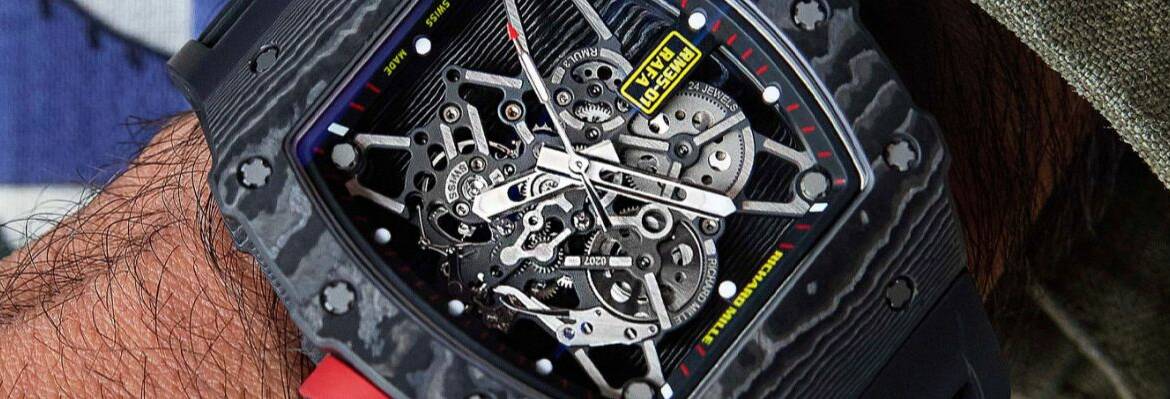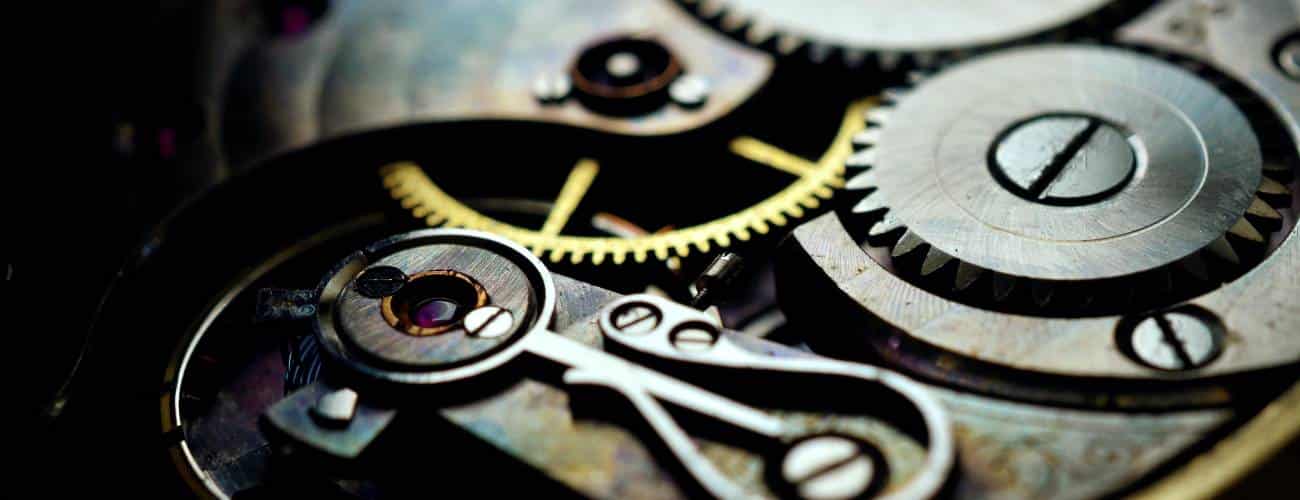Your Complete Guide To Mechanical Watches
Mechanical watches are the oldest type of watch, and they have a fascinating history. From their humble beginnings as simple time-telling devices to their modern forms as intricate works of art, mechanical watches represent centuries of technological progress.
If you’re in the market for an elegant new addition to your wardrobe or just curious about one of mankind’s most enduring inventions, read on!
What is a Mechanical Watch?
A mechanical watch is a type of timepiece that utilises an intricate array of parts in a mechanised movement to tell the time, as opposed to electronic quartz watches that rely on a battery and electronic oscillator regulated by a piece of quartz crystal. At the heart of a mechanical watch is a mainspring which, when wound, slowly unwinds to release energy, powering the watch.
Origins and History of Mechanical Watches
Mechanical watches trace their origins to the 14th century, with the first portable spring-driven clocks. The invention of the balance spring in the 17th century marked a significant advance in accuracy. As the centuries rolled on, further refinements and innovations such as lever escapement and automatic winding improved both precision and convenience.
16th Century: Mechanical watches have a long and fascinating history that dates back to the 16th century. The earliest mechanical watches were developed in Europe and were used primarily by noblemen as pocket watches. These early timepieces were made of brass and featured intricate designs, often including wooden cases or carvings on the dials.
1775: The first mass-produced mechanical watch was created in 1775 by watchmaker Abraham-Louis Breguet. This model was able to keep time accurately for long periods of time, allowing it to be widely adopted for both professional and personal use. As time went on, more complex designs began to appear as advancements in technology allowed for ever more accurate precision timing mechanisms.
19th Century: Throughout the 19th century, many of the world’s most renowned watch manufacturers began to produce mechanical watches on a large scale. These companies included Switzerland’s Rolex, Omega, and Cartier, as well as Germany’s A. Lange & Söhne, Glashütte Original, and Stowa. These companies revolutionised how people keep time by introducing new designs and materials that allowed for more accuracy while still being aesthetically pleasing.
1969: The invention of the quartz movement in 1969 changed the industry forever as it provided an alternative to mechanical movements and offered superior accuracy over traditional mechanisms. Despite this development, mechanical watches remain popular even today thanks to their craftsmanship and timeless design aesthetic. They are also considered collector’s items due to their rarity and value, making them a great investment for those who appreciate their beauty and quality construction.
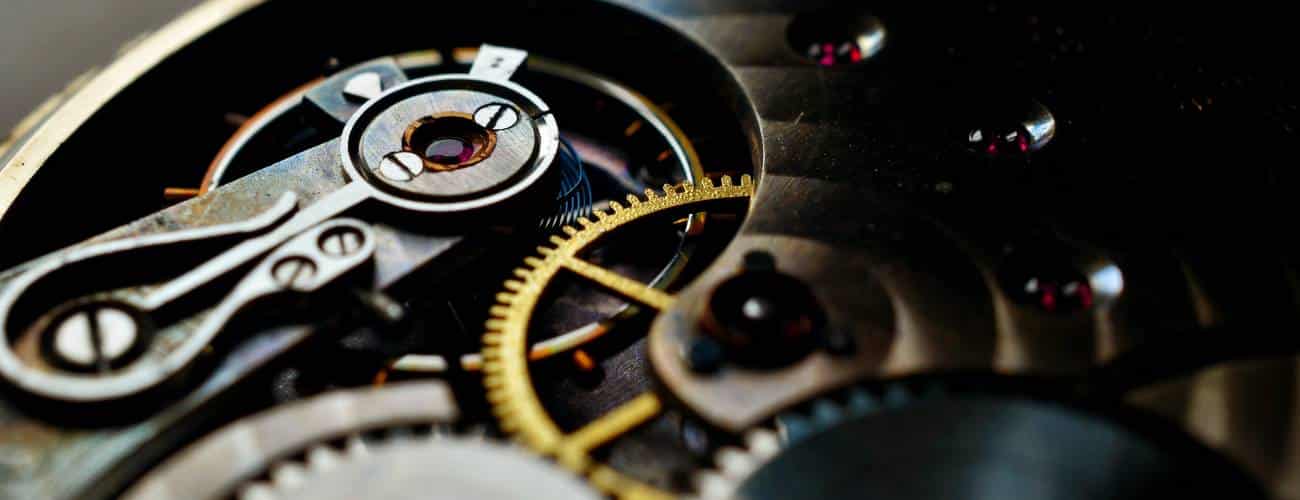
How Mechanical Watches Work
The mechanical watch’s power source is the mainspring, wound either manually or automatically. This energy is transferred through the gear train to the escapement, which divides the energy into regulated parts. The balance wheel uses this regulated energy to create a consistent oscillating motion, driving the timekeeping element of the watch. The motion is then translated to the hands of the watch through the dial train.
- Mainspring: The intricate mechanisms inside a watch are powered by energy stored in an oscillating spring called the mainspring. This is wound up manually or via an automatic winding mechanism. As it unwinds, it transfers its energy to power the various components of the watch, such as the escapement, balance wheel and gear train.
- Escapement: The escapement is responsible for regulating the speed at which the hands move around the dial and prevents them from “running away”. The balance wheel is another important part of the mechanism as it works with the escapement to keep time accurate and make sure the watch runs smoothly.
- Gear Train: The gear train is also an important part of a mechanical watch; this transfers energy from the mainspring to the hands, which allows them to move around the dial at a controlled rate. This is what ultimately makes a watch run.
These are the basic movements behind a mechanical watch, but there are several other components that play different roles in its operation, such as bearings, jewels and pallets. Each component has its own purpose and contributes to making mechanical watches reliable and accurate timekeepers.
Types of Mechanical Watches
Manual Wind Watches
Manual wind watches, also known as hand-wound watches, require the wearer to wind the mainspring manually—typically via the crown—to store potential energy. The interaction with the timepiece endears it to many, creating a ritualistic bond between the wearer and the watch. These watches are often thinner and less complex than their automatic counterparts, affording a more elegant design.
Automatic Watches
Automatic or self-winding watches harness the kinetic energy generated by the wearer’s arm movements to wind the mainspring. An oscillating weight, or rotor, pivots freely around a central point, winding the mainspring as it swings. This offers convenience, as it eliminates the need for daily winding, provided the watch is worn regularly.
Hybrids and Innovations
The watchmaking industry continuously evolves, with brands experimenting with hybrid movements combining mechanical and electronic components, such as Seiko’s Spring Drive. Other innovations involve non-traditional escapements and extensive use of silicon to improve accuracy and reduce service intervals.
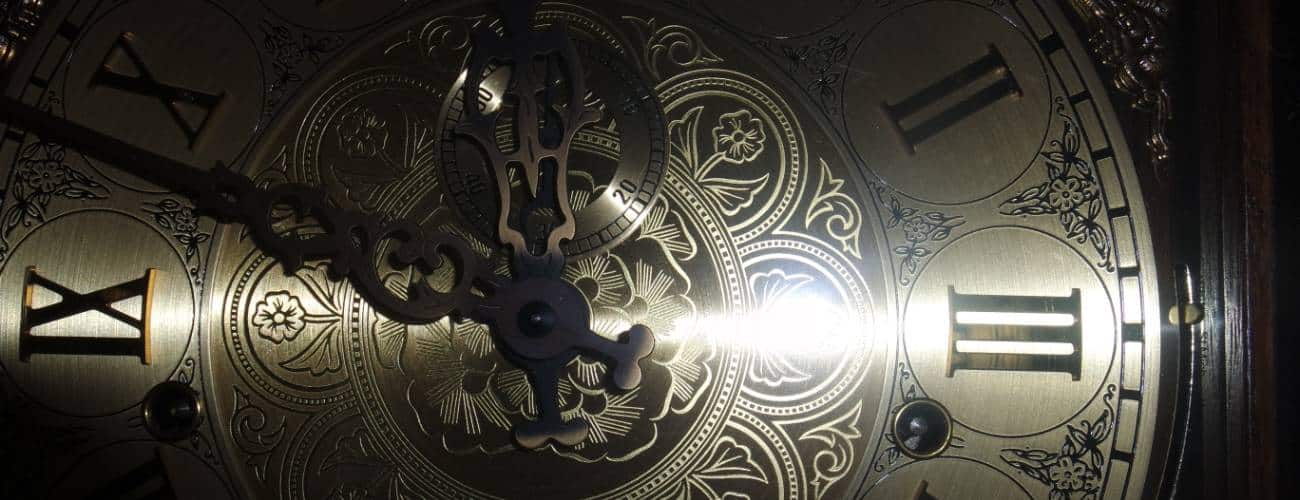
Advanced Complications in Modern Mechanical Watches
Mechanical watches are beloved by enthusiasts and connoisseurs alike for their classic look, timeless design, and intricate craftsmanship. But it doesn’t stop there – modern mechanical watches contain a range of advanced complications that make them even more impressive. Here’s a quick overview of some of the most popular:
- Chronographs: Chronographs are a type of complication built into many mechanical watches that allow you to time events or measure elapsed time. This is done with two push buttons located on the watch case, which start and stop an internal timer within the watch. Chronographs can be highly useful in racing or other activities where timing is important.
- Tourbillon: A tourbillon complication is found in high-end luxury watches and is used to regulate the accuracy of watch timekeeping. It consists of a rotating frame that helps reduce the effect of gravity on a mechanical movement, leading to more accurate timekeeping.
- Perpetual Calendar: A perpetual calendar complication is a type of watch feature that automatically adjusts for leap year and month length variations. This means you’ll never have to worry about adjusting your date manually – the watch will take care of it for you!
- Power Reserve Indicators: Power reserve indicators are also quite common in modern mechanical watches. These complications allow you to always keep an eye on how much power is left in your automatic watch before it needs to be wound again.
Why Choose a Mechanical Watch?
Mechanical watches captivate people for numerous reasons, ranging from their sophisticated engineering to the heritage they represent. Let’s delve deeper into why these intricate timepieces might be the perfect choice for you.
Craftsmanship and Complexity
Mechanical watches are marvels of human ingenuity and precision engineering. A single mechanical watch movement can consist of hundreds, sometimes thousands, of minuscule components. These include springs, gears, wheels, and plates, each meticulously assembled by skilled watchmakers, often under a microscope.
Moreover, the aesthetics of these movements can be breathtaking. Decoration techniques like Geneva stripes, perlage, or blued screws add a touch of beauty to the functional parts. The skeletonised or open-worked watches provide a fascinating view into the beating heart of the watch, making the invisible visible.
Heritage and Tradition
Mechanical watches are not merely timekeeping devices but also historical artefacts. They represent centuries of development, carrying with them stories of bygone eras and human achievement. Many luxury brands have rich histories, some dating back several centuries, with their own unique traditions and iconic designs.
Owning a mechanical watch from these prestigious brands is akin to being part of this long, illustrious tradition. The knowledge that the timepiece on your wrist follows the same fundamental principles as the timepieces of centuries past adds a certain charm and romance to the ownership experience.
Longevity and Durability
Mechanical watches are built to last. Unlike electronic devices that may become obsolete within a few years, a well-cared-for mechanical watch can continue ticking for generations. These timepieces are designed to endure, with high-quality materials and robust construction.
In fact, mechanical watches are often considered ‘living’ objects because they require care and attention, much like a living organism. They need regular servicing and occasional repairs to keep them in optimal running condition. It’s this combination of longevity and the requirement for ongoing care that makes them so endearing to their owners.
Investment Potential
While it’s essential to emphasise that not every mechanical watch will be a sound financial investment, certain models from iconic brands are known to hold or even increase their value over time. Limited editions, rare complications, or models associated with significant historical events or personalities can become highly sought-after collectables.
However, the true investment in a mechanical watch is often emotional. The joy derived from owning and wearing a mechanical timepiece, appreciating its craftsmanship, and knowing its history can far exceed any monetary value.
Considerations When Buying a Mechanical Watch
Purchasing a mechanical watch is a significant decision. Beyond being a simple time-telling device, it’s a personal statement and potentially a lifelong investment. Therefore, it’s essential to consider several factors to ensure the watch you choose aligns perfectly with your needs and preferences.
Brand and Model
The brand and model of the watch you choose can greatly influence your experience as a watch owner. The reputation of a brand can be a reliable indicator of the watch’s quality and durability. Established watchmakers are likely to provide well-crafted, reliable timepieces and offer comprehensive after-sales services.
Furthermore, the model of the watch is equally significant. Certain models, such as Rolex’s Submariner or Omega’s Speedmaster, have rich histories and iconic designs that may appeal to you. It’s essential to research different models, understand their features and heritage, to find a watch that resonates with you personally.
Price
Mechanical watches come in a broad spectrum of prices, ranging from affordable entry-level options to high-end timepieces commanding prices in the hundreds of thousands, or even millions of pounds. It’s important to set a budget and consider what you’re getting for the price.
For example, a higher-priced mechanical watch may offer advanced features like a chronograph, moon phase, or tourbillon complication. It may also feature superior materials, such as a sapphire crystal, a case made of precious metals, or a strap crafted from high-quality leather or metal. Remember that with mechanical watches, you’re often paying for the intricacy of the movement, the quality of craftsmanship, the brand’s reputation, and the actual materials used.
Maintenance
Owning a mechanical watch comes with the responsibility to keep it in good working condition. Regular servicing—typically recommended every 4-5 years—is essential to ensure the watch’s longevity and accuracy. Servicing can involve cleaning, oiling, and occasionally replacing worn-out parts, all of which can be cost-intensive.
Moreover, proper daily care is also crucial. Mechanical watches can be sensitive to harsh environmental conditions, such as extreme temperatures, moisture, and magnetic fields. Knowing how to care for your watch and protect it from potential damage is a vital part of mechanical watch ownership.
Personal Style and Preferences
A watch is a personal accessory that can say a lot about your style and personality. It should align with your aesthetic preferences and lifestyle. Do you prefer a classic, understated look, or does a bold, avant-garde design appeal to you?
Also, consider the size of the watch. The case diameter should be proportional to your wrist size for a balanced look. And don’t forget the comfort aspect—ensure the watch feels good on your wrist.
Consider your lifestyle, too. If you frequently attend formal events, a dress watch may be suitable. If you’re an outdoor enthusiast or involved in sports, a robust sports watch or diver’s watch might be a better fit. For those seeking versatility, everyday watches or ‘all-rounders’ can transition effortlessly from casual to formal settings.
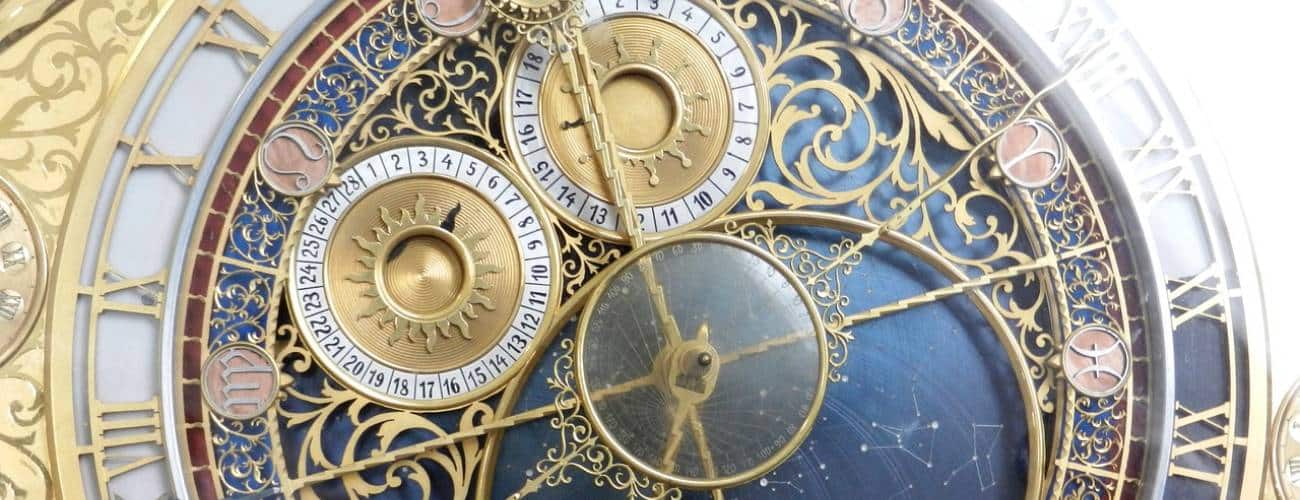
Tips for Caring for Your Mechanical Watch
Caring for your mechanical watch is key to ensuring it remains in good working condition and keeps time accurate. Here are some tips from the experts to help you look after your precious timepiece:
- Winding – Mechanical watches need to be manually wound every day or two; winding helps keep the mainspring tight, which keeps time accurate. To wind a manual-winding watch, turn the crown clockwise until you feel resistance, then stop turning and allow the crown to pop back into its original position. For an automatic watch, move your wrist in a circular motion to give it power.
- Cleaning – Over time, dirt and dust can accumulate inside a mechanical watch so it’s important to give it a regular clean. Take time to carefully remove the back plate and use a soft cloth, cotton swab or small brush to dust off the inside parts of your watch. Make sure you don’t get any moisture in the watch as this can cause damage.
- Oil – Oil is essential for keeping your mechanical watch working properly, so make sure you get it serviced at least once every two to three years. Don’t try and oil your watch yourself as this can cause more damage than good.
- Movement – To ensure the accuracy of your mechanical watch, give it a gentle shake once in a while to keep the parts moving smoothly. This will help prevent any dust, dirt or debris from becoming stuck and affecting the movement of the watch.
- Storage – Keep your mechanical watch in a dry, cool place when it’s not being worn to avoid exposing it to extreme temperatures which can damage the movement and cause it to become inaccurate.
Conclusion
As with any purchase, it’s important to do your research on different brands before purchasing a mechanical watch. Remember that quality is key when investing in such an item – so make sure you only buy from reputable sellers and manufacturers.
Frequently Asked Questions
What is the Lifespan of a Mechanical Watch?
The lifespan of a mechanical watch is truly a testament to its craftsmanship. With appropriate care and regular maintenance, a well-constructed mechanical watch can last for several decades, potentially becoming a family heirloom passed down through generations. There are many cases where vintage mechanical watches, even those over a century old, still function perfectly. Of course, their longevity is predicated on the watch being serviced properly and regularly and being used and stored in appropriate conditions.
How Often Do Mechanical Watches Need to Be Serviced?
The recommended service intervals for mechanical watches can vary, but manufacturers typically suggest every 4-5 years. This is because, over time, the lubricants within the watch can break down or become displaced, causing increased friction and wear on the internal components.
Regular servicing involves cleaning, re-lubricating, and potentially replacing worn parts to ensure the watch continues to function accurately. Some high-end models or watches that see heavy usage may require more frequent servicing. It’s always best to consult with the manufacturer or a professional watchmaker for guidance on service intervals for a specific model.
Can a Mechanical Watch be as Accurate as a Quartz Watch?
Although mechanical watches have improved their accuracy remarkably over the years, they generally cannot match the near-flawless precision of quartz watches. A high-quality mechanical watch may deviate by a few seconds a day, while a quartz watch might only deviate that much in a month or even a year.
This is because quartz watches use electronic oscillators regulated by quartz crystals, which vibrate incredibly consistently when an electric charge is applied. However, many enthusiasts and collectors appreciate mechanical watches not for absolute accuracy, but for their intricate design, craftsmanship, and the unique character each piece possesses.
What Are Some Reputable Brands of Mechanical Watches?
The world of mechanical watches is filled with exceptional brands, each with its unique heritage and design ethos. Rolex, a Swiss luxury brand, is perhaps the most recognised name, renowned for its craftsmanship, reliability, and robustness. Patek Philippe is celebrated for its sophisticated complications and impeccable finishing. Omega is known for its innovative spirit, having been the first watch on the moon.
Jaeger-LeCoultre is respected for its in-house movements, while Audemars Piguet is famed for its iconic Royal Oak design. Seiko, a Japanese brand, offers a wide range of mechanical watches at different price points, all respected for their quality and value. Each brand has its strengths and character, making the choice largely dependent on individual preferences and needs.
Are Mechanical Watches Worth the Investment?
The value of a mechanical watch extends beyond its price tag. While not all mechanical watches appreciate value, certain models from prestigious brands can hold or even increase their worth over time. Factors influencing this include the brand’s reputation, the rarity of the model, and its condition and provenance. However, the true value of a mechanical watch lies in its craftsmanship, heritage, and the enjoyment it brings to the wearer. For those who appreciate these qualities, a mechanical watch can indeed be a worthy investment.

